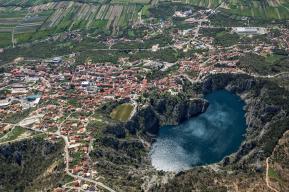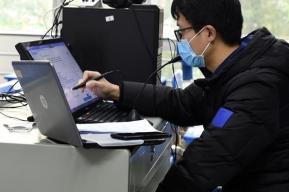مقال
في الصين، برامج حسب الطلب على هيمالايا أف. أم.

بعد أن كان مقدِّم برامج في إذاعة مقاطعة جيلين (الصين)، انتقل شي زهان إلى العمل في وسائل الإعلام السمعية الإلكترونية، وانطلق في ممارسة شكل جديد من القصص الصوتية. منذ سنة 2014، يروي تاريخ الأسر الحاكمة الصينية على نحو إبداعي وحيوي، على إذاعة هيمالايا أف. أم.، وهي محطة وطنية تقع في شانغهاي وتُعتبر الشبكة الإذاعية الأكثر شعبية في الصين.
بقلم شي زهان، مقدِّم برامج حوارية (الصين)
أتيحت لي فرصة متابعة دورة تدريبية نظمتها المنصة السمعية الإلكترونية هيمالايا لصالح مهنيّ وسائل الإعلام. بفضل هذه الدورة، تمكنت من اكتساب التقنيات المتطورة في مجال وسائل الإعلام الحديثة. ثم اجتهدت لتجديد طريقة تقديم الأخبار، مع الالتزام بواقع الأحداث وتكييف تقديمها مع أذواق الجمهور، مما جعلني أحد مقدمي البرامج الأكثر شعبية في هذه المنصة.
ومن خلال معالجتي لتاريخ الصين بطريقة هزلية، بلغ عدد المتابعين للبرنامج 800.000 مشترك أي أكثر من عشرة أمثال عدد المشتركين في الإذاعات التقليدية. وقد ازدادت شعبية المضامين الإذاعية في الصين خلال السنوات الأخيرة. وعلى عكس ما هو معتاد في معظم البلدان الغربية، حيث تضمن الإعلانات تمويل المنصات الإذاعية، فقد تمكنت الشبكات الصينية من إقناع عدد متزايد من المستمعين، ولاسيما الشباب، بضرورة القيام بأنفسهم بتمويل إنتاج البرامج الإذاعية والمعارف التي تنقلها.
إن عملية تسويق البرامج ـ التي تتمثل في قبول المستمعين دفع بضع عملات يوان مقابل الاستماع إلى برامجهم المفضلة ـ تتيح لمقدِّمي البرامج زيادة مداخيلهم تبعاً لما يحظون به من شعبية. ومن ثم فقد وفّرت 150.000 دولار لإنشاء استديو خاص بي، وذلك بفضل الأرباح التي حققتها من خلال منصة هيمالايا.
يعد راديو هيمالايا أف. أم.، الذي يُعتبر رائداً في البث المباشر والكتب الإذاعية والمدونات الصوتية، وله مكاتب في الصين واليابان والولايات المتحدة، أكثر من 600 مليون مستخدم. وبفضل ما يتمتع من خبرة فريدة من نوعها، يتيح هذا الراديو للمنتجين الهواة والمهنيين إنتاج مضامين لجمهور في تزايد مستمر.
«تبادل الحكمة الإنسانية بفضل الإذاعة»
يتيح البث الإذاعي للمحامين والأطباء وغيرهم من الخبراء تبادل معارفهم مع عامة الجمهور. ويدعم راديو هيمالايا جهودهم وفقا للهدف الذي يسعى إلى تحقيقه ألا وهو «تبادل الحكمة الإنسانية بفضل الإذاعة». وتمثل المنصة الإلكترونية سوقاً واسعة النطاق للمضامين المدفوعة الأجر الخاضعة لحقوق التأليف، فضلاً عن كونها قناة توزيع هامة. ويمكن لكل شخص الاستفادة من هذا النموذج الاقتصادي: مثال ذلك أن أحد مقدمي البرامج في مدينة شانيانغ، يدعى ديشو، خطرت له فكرة تشجيع المعاقين على تسجيل كتب إذاعية والحصول على مداخيل جيدة.
أتاحت الممارسات الجديدة للعملاق الإذاعي الأسيوي للمنتجين الإذاعيين التقليديين إجراء تحوّل ناجح، وذلك في سوق صيني يسجل نموا باهرا للبث الإذاعي الإلكتروني وتشتد فيه المنافسة. وقد تعلمت من دورة التدريب وسنوات الخبرة في راديو هيمالايا إنتاج مضامين مبتكرة، مع تطبيق ثلاثة مبادئ تقنية أساسية تخص وسائل الإعلام الجديدة، وهي المبادئ التي غيرت طريقتي في التفكير وأحدثت الفرق بالنسبة لي.
ويتمثل المبدأ الأول في تركيز الاهتمام على استكمال الاستماع، أي احتمال مواصلة الاستماع حتى نهاية البرامج، أكثر من الاهتمام بعدد النقرات: ففي أكتوبر 2019، بلغ استماع المستخدمين لراديو هيمالايا 170 دقيقة في المتوسط. غير أن الدراسات أشارت إلى أن نصف عدد المستمعين توقف عن الاستماع بعد مضيّ بضعة دقائق.
ومن ثم، قضيت ستة أشهر في دراسة سلوك مستخدمي الإنترنت، ساعياً إلى تنمية «روح جديدة لتغطية الوقائع الحديثة واكتشاف الأنباء المثيرة». إن الأمر المهم في هذه المهنة يتمثل في إعداد البرامج إعداداً جيداً ومتابعة الأخبار للإلمام بكل شيء. قبل تسجيل أيّ برنامج، أخصص ساعتين في التحقق من الأنباء الواردة والأحداث الجارية، فضلاً عن ثماني ساعات في تحرير السيناريو، وذلك قبل استخلاص عناصره في نهاية المطاف ووضعها في برنامج لا يدوم سوى ثماني دقائق. وبفضل عملية الإعداد الطويلة هذه، تمكنت من مضاعفة عدد المستمعين لبرامجي، وسرعان ما ارتفعت معدلات استكمال الاستماع.
أما المبدأ الثاني الذي تطبقه وسائل الإعلام الجديدة، وهو لا يقل أهمية عن الأول، فيتمثل في تحسين خبرة المستخدمين. وفي هذا المجال، قمت بإعداد منهج خاص بي يتلخص في التخلي عن استخدام الخلفيات الصوتية الصاخبة المعتادة في الإذاعات التقليدية، وتعويضها بموسيقى تهيئ جوا يحث الجمهور على الانغماس في موضوع البرنامج.
إن «الانتقاء» و«الإبداع» هما الكلمتان الرئيسيتان في المبدأ التقني الثالث لوسائل الإعلام الجديدة. وبصفتي مقدِّم برامج في المنصة المذكورة، فإني أسمح لنفسي باختيار مواد لن يجدها الجمهور في أي مكان آخر. ثم أمر إلى تفسير هذه المواد بطريقتي الخاصة، وهو ما يثير اهتمام المستمعين الذي يتابعون برامجي، مع مدهم في نفس الوقت بالمعلومات.
ومن بين المشاريع التي أقوم حاليا بإعدادها لراديو هيمالايا، دليل صوتي فردي حول جنود الفخار في ضريح الإمبراطور الأول كين. ويكفي مسح رمز الاستجابة السريعة ليتمكن السياح الذين يزورون الموقع من الاستماع إلى القصة التي أرويها.
اطلع على مقالات أخرى نشرتها رسالة اليونسكو حول الإذاعة.
Shi Zhan
Chinese broadcaster and talk-show host.
It was by pure chance that I enrolled in a training course that Himalaya, the online audio platform, was offering to media professionals, amateur voice lovers and people from all walks of life. It was from this course that I learnt how to use cutting-edge ideas and techniques in new media broadcasting. By using creative narration and sharing knowledge based on a respect for historical facts and audience preferences, I am now one of the most popular hosts on the platform.
With my new media thinking and humorous interpretation of Chinese history, I have attracted over 800,000 fans – ten times the number of fans I had in traditional media. Audio content has gained popularity in China over recent years. Unlike in most Western countries, where public or private advertising funds radio platforms, Chinese networks are gradually convincing audiences – especially the younger generation – to pay for audio content and knowledge.
This monetizing of audio programmes – where listeners think it is worthwhile to chip in, often in very small amounts, to listen to their favourite shows – has allowed radio hosts to increase their incomes, depending on their popularity. I recently spent $150,000 of my income from Himalaya to build my own studio.
A pioneer in live-streaming broadcasts, audiobooks and podcasts, Himalaya FM – with offices in China, Japan and the United States, and plans to expand further – has over 600 million users (as of October 2019, according to a company release). The network’s unique expertise has enabled amateur and professional producers to create content for a potentially broad and burgeoning audience.
“Sharing human wisdom through audio”
Professional lawyers, doctors and other experts can share their knowledge with the general public through audio. Their efforts are supported by Himalaya, whose stated mission is to “share human wisdom through audio”. The online audio platform provides a large market for paid copyright content, and a wide distribution channel. Anyone can benefit from the company’s business model. One striking example of this is of broadcast host Deshu from Shenyang, who led a group of disabled people to read and record audiobooks, earning them a good wage.
In a fast-growing and intensely competitive Chinese online audio market, the new radio practices followed by the Asian audio giant have enabled traditional radio producers to achieve a successful transformation into new media hosts. My training and years of experience with Himalaya have taught me to create original content while adhering to three fundamental new media practices – which have transformed my way of thinking and have proved game-changing.
The first new media practice involves paying more attention to the completion rate than merely looking at the click-through rate of listeners. The completion rate signifies the probability that the audience will listen to the programme till the end. Himalaya’s users spent an average of 170 minutes listening to its shows (as of October 2019), but the back-end data reflected that after just a few minutes of listening, half of my listeners left. This really surprised and frustrated me.
To solve this problem, I spent half a year cultivating the internet’s “user thinking” model, forcing myself to develop “a sharp mind while covering the latest events and discovering the latest news”. Doing your homework and being up-to-date is very important in this business. Before recording each programme, I study the news and current affairs for two hours and spend eight hours writing an original script – before finally distilling it to a programme of only eight minutes. This “grinding” of my own work has doubled my audience, and allowed me to rapidly increase the completion rate.
The second new media practice involves improving the user experience, which is of paramount importance. To achieve this, I developed my own method. This involved moving away from the “loud” background music of traditional radio, and using music as a tool to enhance the atmosphere – so the audience would pay more attention to the content itself.
“Selection” and “creation” are the keywords of the third new media practice. As a new media host, I dare to choose material that is not accessible to the audience anywhere else. This original content is created with my own interpretation – making it both interesting and informative for my listeners.
My current projects for Himalaya include working on an audio guide on the terracotta warriors of the Mausoleum of the First Qin Emperor. Tourists only need to scan the QR code to listen to my narration.










